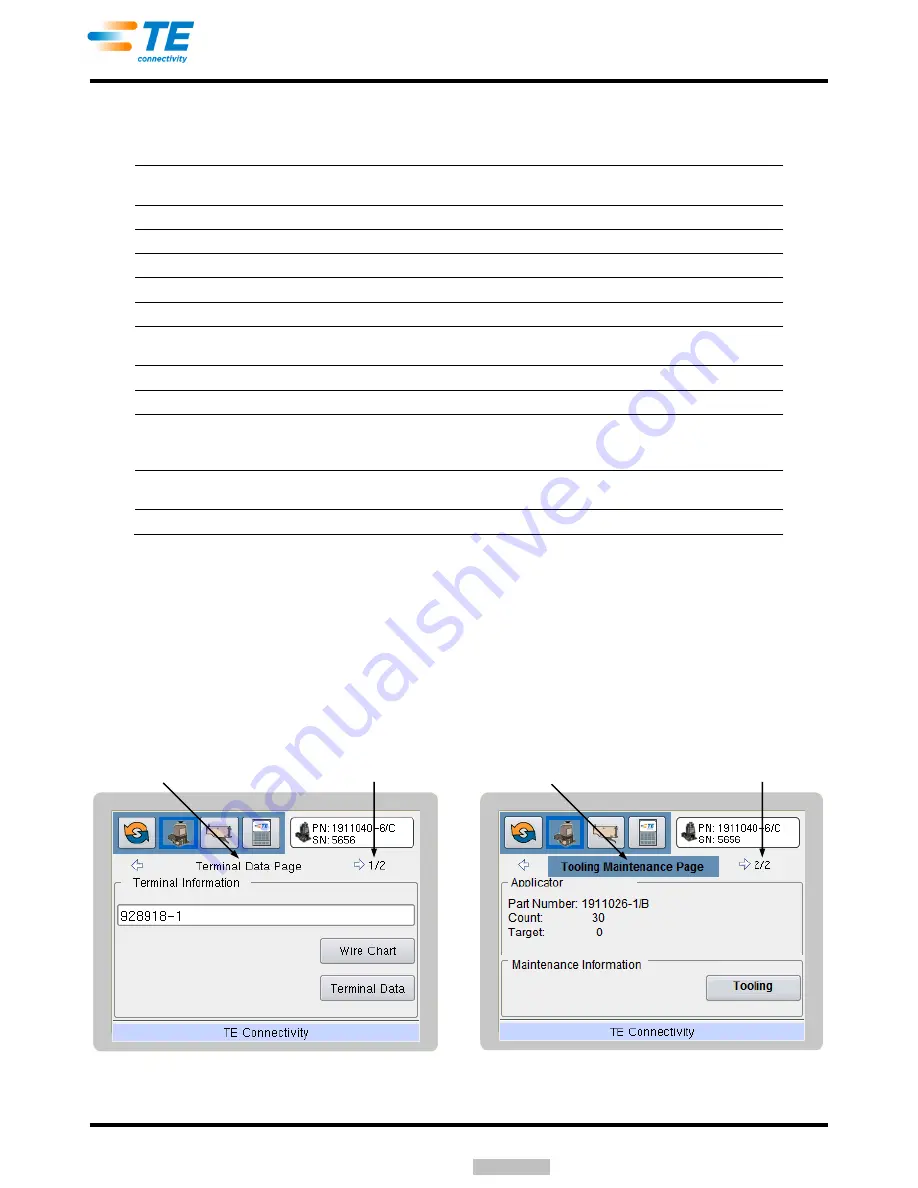
409-32023
Rev
B
29 of 41
2. Press the Enter key. When the Terminal Data pushbutton is activated, a screen similar to the one
shown in Figure 43 (Terminal Data screen) will appear. The Up and Down arrow keys can be used to
scroll through the data. Data descriptions are given in Figure 44.
Serial Number:
serial number of the applicator assigned by TE (the serial number is unique for each applicator
manufactured by TE)
Revision:
applicator revision assigned by TE
Applicator Name:
customer
assigned name
Feed Finger ID:
feed finger part number
Application Specification: application specification associated with the selected terminal
Theoretical Crimp Width: theoretical crimp width of the terminal
Terminal Length:
length of the terminal from the tip of the crimped wire to the end of the terminal (this is used in
certain leadmakers for machine positioning)
Minimum Strip Length:
terminal manufacturer's recommended minimum wire strip length
Maximum Strip Length:
terminal manufacturer's recommended maximum wire strip length
Feed Extend Position:
the feed finger extend position that places the terminal in the crimp tooling (this value is initially
calculated but is easily changed and automatically saved when you adjust the feed extend
position)
Feed Retract Position:
the feed retract position is the product feed pitch of the terminals (this value is initially calculated
but is easily changed and automatically saved when you adjust the feed retract position)
Feed Rate:
manufacturer's set speed or motion profile for proper terminal feeding
Figure 44
3.6.
Applicator Page Data
The Applicator page is accessed by way of the main menu bar using the Right and Left arrow keys to move to
the Applicator icon. The applicator Terminal Data page looks exactly like the Run page (the difference being
more operational). The Run page is used to select the terminal to run and view its data. This page is provided
so that the user could view data for any terminal without changing the terminal that was selected to run.
The Applicator page consists of several subpages. Moving between pages is accomplished by moving to the
subpage label and using the Right and Left arrow keys. In Figure 45, where the subpage label is highlighted, it
is from this position that the Right and Left arrow keys can be used to switch between subpages.
Figure 45
Subpage Label
Page Number
Subpage Label
Page Number
Downloaded From




























